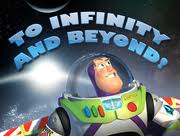References:
Buzz Lightyear:
The name of my character is Lightyear, which I drew inspiration from the existing character, Buzz Lightyear from ToyStory. I find the name Lightyear pretty relevant to my character as it suggests speed, as if one can travel several lightyears effortlessly. I also adapted Buzz's tagline as it is one of my favorite lines.
The Flash:
The general outlook of my character is similar to my favorite superhero, The Flash, as my character will don the same colors, red and yellow. I admire The flash's speed and would like to implement it into my character.
Captain America:
Captain America is my second favorite superhero. I was quite upset when they decided to remove the wings from his head in the later versions as he looked better with them. Hence I decided to implement the wings on my character's head as a "tribute".
Little Green Men:
Little green men from ToyStory is my favourite cartoon character as they are so cute and adorable. As it was inappropriate to implement their most distinct feature which is their three eyes, I decided to make their logo my character's logo, which is a planet with a ring.
Initial sketches:
Final character:
Name: Lightyear
Tagline: "To infinity, and beyond!"
Introduction:
Introducing Lightyear, a child superhero that I have created by merging parts of my favorite cartoon/superhero characters to form one. Lightyear is part of a superhero team, the Zius League. Together, they will save the day, anyday. He has several superpowers, such as:
- Lightning speed
- Elasticity
- Flight
Story:
Millions of lightyears away from Earth, there exists another planet crawling with liveforms, planet Zius. Zius was once a peaceful place, a haven, you may say. Until now. Evil forces from neighboring planet, planet Crix, have invaded Zius, to take control by force, and to claim their land. Who will stand up to these forces, who will save the day? The Zius League of course.
Driving force:
The driving force of Lightyear, is the same as that of the Zius league, to maintain peace in planet Zius, and fight the bad guys, of course!
Appearance:
- Lightyear has a small build as he is a child superhero. I gave him limbs without details such as hands and feet to make it more cartoony and casual.
- Lightyear dons a mask like most superheroes and has two wings on his head to symbolize flight.
- Lightyear dons a planet logo on his chest which signifies his planet Zius.
Behavior:
- Lightyear is the youngest and fastest of the Zius League.
- Lightyear is mischievous and full of pranks, the joker of the Zius league.
Short dialogue:
-Over the communication system-
Zurk(Captain of Zius League): "Lightyear! Where are you?! We have a meeting in 5!"
Lightyear: "Knock knock!"
Zurk: "Sigh.... Who's there?"
Lightyear: "Disco!"
Zurk: "Disco who?"
Lightyear: "Disconnected."
Zurk: "Lightyear...?"
Zurk: "LIGHTYEAR!!!"
Reflection:
This exercise taught me how to brainstorm for ideas and draw inspiration. Usually, when I draw characters, I only draw the basic pose, which is the front view. This exercise taught me that different views and poses are hard to draw as we have to consider the positions of every body part. I had fun researching on my favourite characters and combining them into one character.

















































